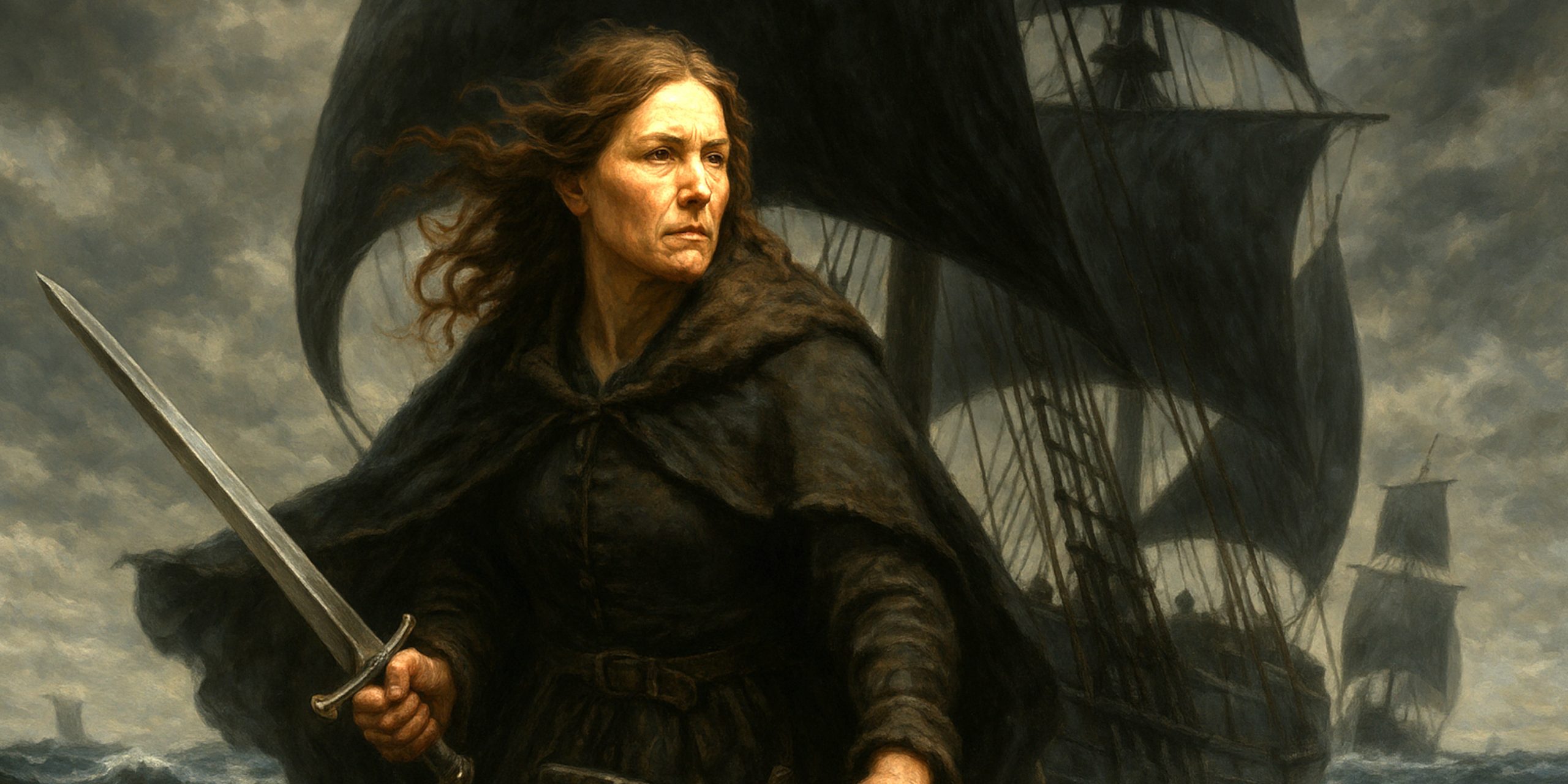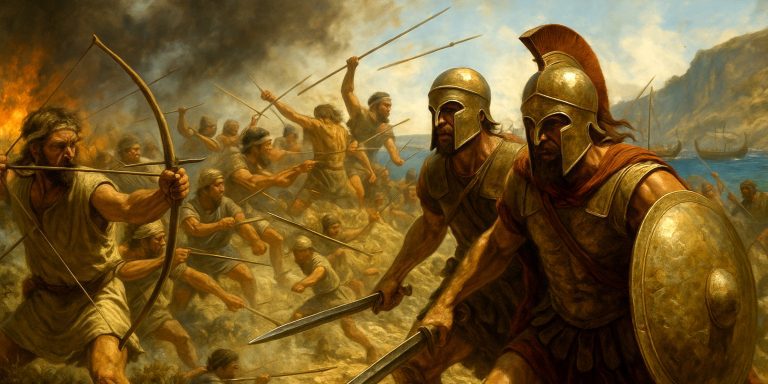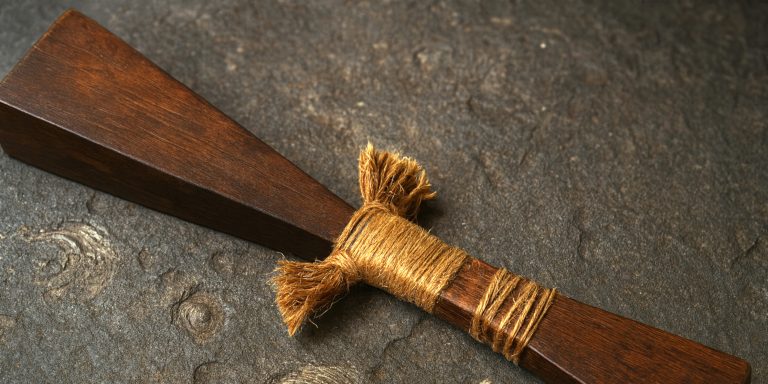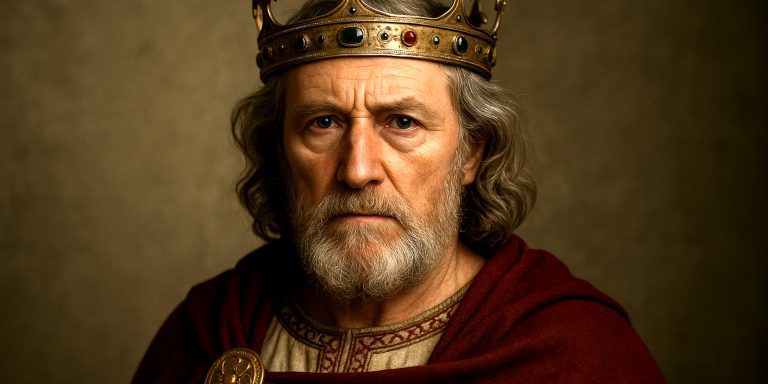
There are few women in medieval history whose reputations evoke both fear and fascination quite like Jeanne de Clisson. She was a noblewoman who became a pirate. A grieving widow who turned her sorrow into maritime vengeance. A mother who armed ships to wage personal war on a king. And unlike so many legends inflated by time, Jeanne’s story has teeth, sharpened by the politics of 14th-century France and the cruelty of royal justice.
Origins and Early Life
Jeanne de Clisson was born around 1300 into Breton nobility. She married three times, the most significant being to Olivier de Clisson IV, a powerful Breton lord caught in the tangled loyalties between England and France during the Breton War of Succession.
When Olivier was accused of treason against France, arrested, and executed without fair trial in 1343, Jeanne’s life changed forever. His body was displayed at Nantes, his head mounted on a spike in Paris. Jeanne’s grief curdled into rage.
The Turning Point
History records that Jeanne swore vengeance on King Philip VI of France and those who had condemned her husband. She sold off her estates, gathered a band of loyal supporters, and began attacking French forces on land before fleeing to England.
Contemporary chroniclers like Jean Froissart recount her as a woman “of great heart and courage, who avenged her lord most cruelly.” While Froissart often embellished his tales, his description fits the ferocity of her campaign.
The Black Fleet
With English backing, Jeanne outfitted three warships, the most famous being My Revenge (or La My Vengeance in later French sources). These were painted entirely black, with red sails that must have stood out like blood on the sea.
Her fleet operated along the Channel and Breton coasts, preying upon French ships. Survivors described her attacks as swift and merciless. She reportedly executed every nobleman she captured, leaving only one or two sailors alive to tell the tale.
Whether or not she truly decapitated French officials herself is uncertain, but her reputation was so grim that her ships were said to strike terror even in hardened mariners.
Weapons and Warfare
While the details of Jeanne’s exact armament are sparse, the technology of the time allows us to make educated assumptions:
Weapons likely used aboard her ships:
- Arbalests and crossbows for ranged assault
- Poleaxes and cutlasses for boarding actions
- Daggers and short swords for close combat
- Early swivel guns or bombards (possible, though rare on small ships before 1350)
Her men were seasoned sailors and soldiers, often drawn from Breton ports loyal to her late husband. Jeanne herself was no passive figurehead. Chroniclers note she fought on deck with sword in hand, a shocking sight in an age when women of her rank were expected to supervise embroidery, not executions.
Battles and Raids
While no single naval engagement defines her campaign, her Black Fleet ravaged French commerce for over a decade. English sources celebrate her as a useful privateer, striking at French supply routes between Brest, Saint-Malo, and Normandy.
Her most infamous action was said to involve the capture of a royal French transport ship carrying nobles and royal officers, all of whom she ordered killed.
By 1356, her raids had become so notorious that the French Crown placed a substantial bounty on her head. Jeanne de Clisson had become a legend of terror in her own lifetime.
Treasure and Bounty
Despite her outlaw status, Jeanne’s fleet was not merely an act of vengeance. It was profitable piracy, with seized cargoes of wine, cloth, and silver traded through English ports. There are hints in English archives that she was compensated with lands for her service, though few details survive.
Her ships were likely refitted cogs or small galleons, perfect for fast ambushes rather than prolonged sea battles. Her flag, if the stories are to be believed, was black as mourning cloth.
Later Years and Fate
After years of warfare at sea, Jeanne eventually retired to Brittany, possibly after remarrying an English knight, Sir Walter Bentley. She died peacefully around 1359, a surprising end for a woman who had once ruled the Channel through blood and fury.
Her grave has never been definitively located, but her name lives on in Breton folklore, where she remains both feared and admired.
Legacy
Jeanne de Clisson stands at the crossroads of myth and history, part pirate, part avenger, part noblewoman wronged. She broke every rule her century placed on women, wielding her ships as instruments of both grief and justice.
Her story reminds us that vengeance, once set loose on the tides, rarely sails back to shore quietly.
Contemporary Quotes
“A woman of high courage and fierce heart, who made the sea her battlefield.” – Jean Froissart, Chroniques
“She avenged her husband’s death with the sword and the storm.” – Breton oral tradition, recorded centuries later
The Seven Swords Takeaway
In a time when women were expected to submit quietly to fate, Jeanne de Clisson rewrote hers with saltwater and steel. She was not a saint, and she was not a myth. She was a mother, a widow, and a scourge upon the seas.
And for a brief, dark moment in the 14th century, she made kings fear a Breton woman with black sails.
Watch the documentary:



